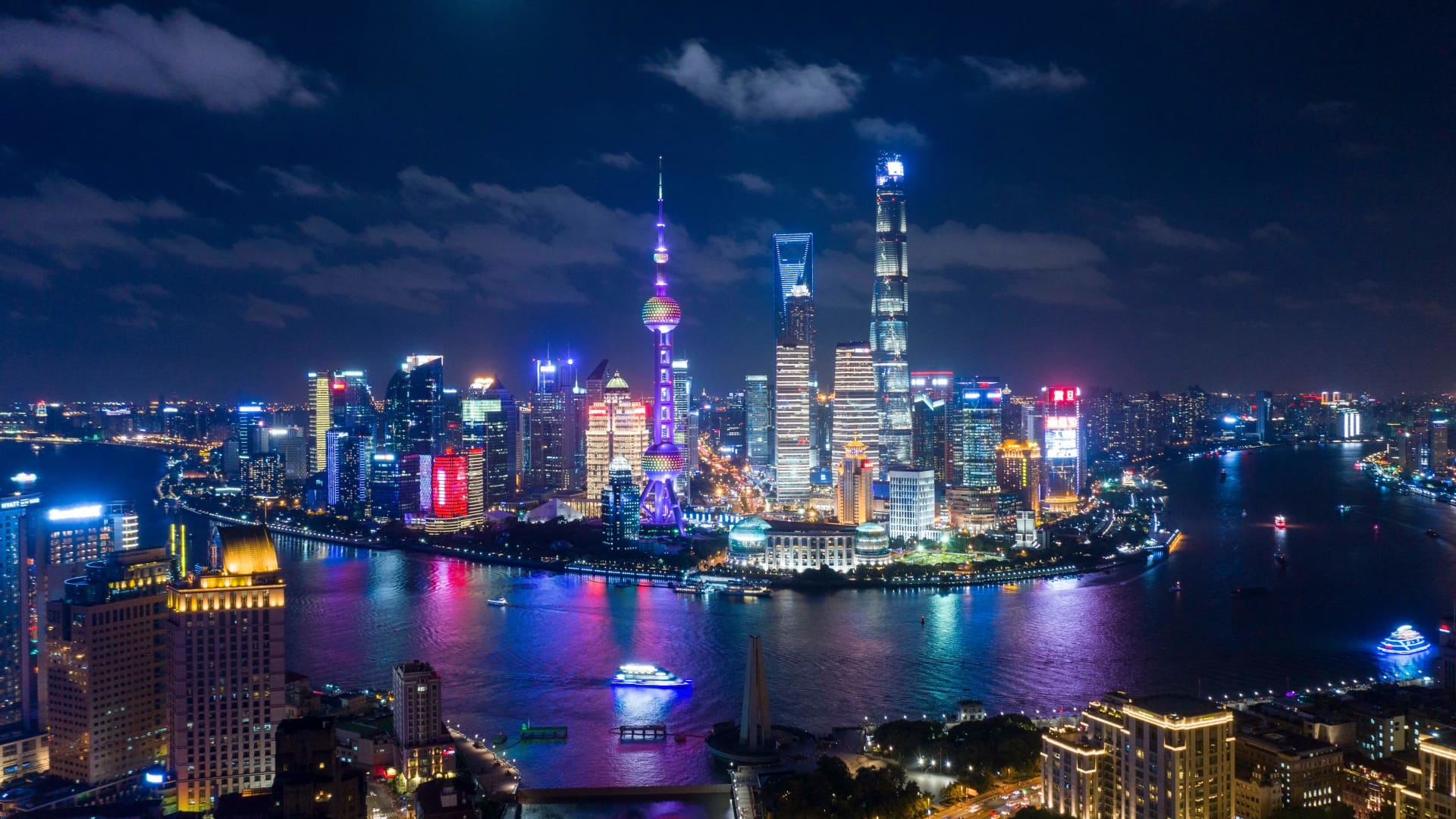China’s latest wave of Covid restrictions has forced millions of people — roughly three times as many as live in New York City — to stay home and undergo mass virus testing in the metropolis of Shanghai.
As Covid cases began to spike in late February, Shanghai tried to control the outbreak with targeted, neighborhood lockdowns. But the city, a center for global transport, manufacturing, finance and trade, decided in late March to implement a two-stage lockdown that soon applied to all districts, generally forcing people not to leave their apartments.
Most people outside China know that Shanghai is big, but few realize just how big economically. The following numbers indicate the scale of Shanghai as an economic center — and may hint at the cost of the lockdown.
Size
Shanghai’s official permanent resident population in 2020 was 24.9 million.
- That’s slightly less than Australia’s population of 25.7 million, per the World Bank.
- But it’s only 1.8% of China’s 1.41 billion people.
In terms of U.S. states, Shanghai is between the size of Florida (pop. 21.8 million) and Texas (pop. 29.5 million).
In terms of U.S. cities, Shanghai is three times the size of New York City (pop. 8.3 million) — the largest city in the United States.
That means the 280,120 Covid contacts Shanghai has reported as of Thursday for the latest outbreak represent only 1.1% of the city’s population.
GDP
Shanghai’s GDP grew by 8.1% in 2021 to 4.32 trillion yuan ($680.31 billion).
- That GDP is slightly more than Sweden’s ($660.92 billion) and less than Poland ($720.35 billion), according to the IMF.
- But Shanghai’s GDP was only 3.8% of China’s national GDP of 114.37 trillion yuan in 2021, according to official figures.
Global trade center
Shanghai sits at the mouth of the Yangtze River, one of the two main rivers in China.
According to Bernstein:
- Shanghai is home to the world’s busiest port, followed by Singapore.
- Shanghai’s Pudong airport is the world’s third-busiest cargo airport, behind Memphis, Tennessee, and Hong Kong.
In all, Shanghai accounted for 7.3% of China’s exports and 14.4% of imports in 2021, according to Citi.
Manufacturing and corporate center
According to Citi, Shanghai is China’s:
- Most important semiconductor manufacturing center, home to SMIC, Hua Hong and Universal Scientific Industrial.
- Home to many auto producers: SAIC Motor, SAIC’s joint companies with Volkswagen and GM, Nio, Tesla and Ford.
- Headquarters or a major center for multinational corporations’ China operations: Apple, L’Oreal, Samsung Electronics, P&G, L’Oreal, LVMH, Nike, Panasonic, Philips, Johnson & Johnson and General Electric, among others.
- Base for ship producers: Jiangnan , Zhonghua and Waigaoqiao shipbuilding.
Finance
The Shanghai Stock Exchange is the world’s third-largest by market capitalization, behind the New York Stock Exchange and the Nasdaq as of the end of 2020, according to World Federation of Exchanges data cited by the exchange.
U.S. mutual fund giant Vanguard announced in 2020 a plan to move its Asia headquarters to Shanghai from Hong Kong.
Fidelity’s China finance business is based in Shanghai, as is American billionaire Ray Dalio’s Bridgewater China operations.
Consumer hub
In Shanghai, official figures for 2021 show:
- Average disposable income of 78,027 yuan ($12,288) — more than double the nationwide average of 35,128 yuan ($5,531).
- Average consumer spending of 48,879 yuan — also double the national average of 24,100 yuan.
U.S. wholesale chain Costco chose Shanghai for its first mainland China store in 2019.
And as of last year, Shanghai was home to the most coffee shops in the country, with nearly 3 shops per 10,000 people, versus a ratio of about 2 for Guangzhou, Shenzhen and Beijing, according to Meituan.
Shanghai is home to three of the top 20 universities in China, according to U.S. News and World Report.
The number of foreigners living in Shanghai fell to 163,954 people in 2020, down by 21% versus a decade earlier, according to official censuses. The southern province of Guangdong is now home to the most foreigners in China, at more than 400,000.
The overall number of foreigners in the country rose during those 10 years by about 40% to 1.4 million people — or about 0.1% of China’s population.
